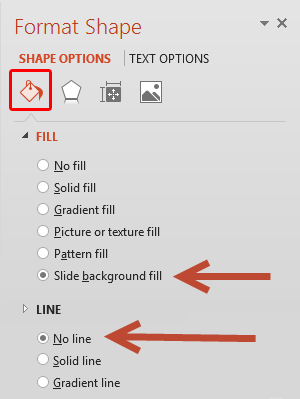Wat als het
combineren van vormen of het gebruiken van
Bijsnijden onvoldoende blijken om een specifiek gedeelte van een foto te gebruiken.
(zie mijn vorige blogartikelen,
Gedeelte foto gebruiken (deel 1); en
Gedeelte foto gebruiken (deel 2)
In dat geval kan je nog altijd via het tekenmateriaal het gedeelte afbakenen dat je wil gebruiken. Voor versies PPT 2003 en PPT 2007 kan je volgend artikel consulteren:
Gedeelte foto gebruiken in PPT 2003-2007
Van onderstaande foto wil ik alleen de gebouwen overhouden, strand en hemel moeten verdwijnen.
Stap 1
Plaats de afbeelding waarvan je een gedeelte wil gebruiken op de achtergrond van de dia
Rechtsklik op je dia, kies voor
Achtergrond opmaken.
Selecteer het keuzerondje
Opvulling met afbeelding of bitmappatroon, selecteer je foto via de knop
Bestand:
Stap 2 Activeer het tekenmateriaal Vrije vorm en teken een vorm op de foto rond het gedeelte dat je wil gebruiken
Je cursor verandert in een + teken, beweeg en klik tot je het volledige stuk hebt afgelijnd. De omtrek van de getekende lijnen is standaard in een blauwe kleur, voor alle duidelijkheid heb ik de lijndikte en kleur wat aangepast zodat je goed kan zien wat het resultaat zal worden. De omtrek zal je op het einde ook laten verdwijnen.
Nadat je geklikt hebt op het beginpunt is de vorm gesloten en die bedekt het gewenste gedeelte.
Stap 3
De getekende vorm krijgt de achtergrondvulling van de dia.
Klik rechts op de getekende vorm en kies voor
Vorm opmaken.
Selecteer het keuzerondje
Achtergrondopvulling voor dia bij opvulling en bij lijn kies je
Geen lijn:
De vorm is nu transparant en de achtergrond van de dia is zichtbaar door de vorm heen.
Denk eraan dit is op het voorbeeld enkel goed duidelijk omdat de rand dikker en rood is. Onder geen beding mag je de vorm verplaatsen, dat zal alleen tot gevolg hebben dat een ander gedeelte van de dia achtergrond er wordt in opgenomen.
Stap 4
Afbeelding opslaan
Klik met je rechtermuisknop op de vorm, kies
Opslaan als afbeelding, bewaar de afbeelding en je bent klaar.


























